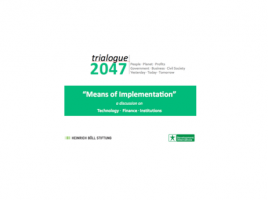Can Jal Shakti Abhiyan Alleviate Our Water Crisis?
The story of India’s water crisis today is not an accidental occurrence. What is unfolding in front of us has been warned by both experts and practitioners several times over. By 2030, the crisis can deepen by 40% more if business as usual continues.
The Central Ground Water Board in 2017 declared 1,592 blocks in 257 districts as “Water Scarce Blocks” at varying degrees such as critical, over exploited to least water availability. Of late, following the footsteps of Cape Town, several cities in India are queuing up to declare Day Zero, including Bengaluru, Chennai etc. Responding to these alarm bells, the recently formed Jal Shakti Ministry has launched the much ambitious and laudable Jal Shakti Abhiyan for conserving water, which further aims to provide water through pipes to all households. For the first time, people’s participation has been emphasised besides various line ministries working together for the common goal.
In spite of all the well-meaning intentions, the budgetary allocations do not reflect the same thinking and our planning processes do not take pains to deviate from the treaded paths. Realising the ill effects that Green Revolution had brought in, we say we wish to promote more organic and nature-based farming without spelling out how this can become a mass movement. Worst still, when it comes to budgetary allocations, a whopping Rs.80,000 crore fertilizer subsidy has been allocated for chemical based farming. Further, extension of minimum support prices for water and chemical intensive crops is resulting in further depletion and degradation of the quality of the water sources thus affecting public health. It does not give us any confidence that we are walking the talk. In such business as usual scenario, farmers will not change cropping patterns, will continue to commit suicide, cancer trains will continue to run and large dams will continue to get built.
The central reason for current water scarcity is due to more than 80% of ground water being over exploited by agriculture, industries and for urban uses. If that is the case, the biggest short coming of the Jal Shakti Abhiyan scheme is that it is making no efforts to regulate excessive ground water exploitation. For it not to become yet another missed opportunity, we need to make paradigm shifts from central supply to decentralised water governance systems based on robust, reliable data and information, which has been the biggest challenge of the water sector. We are not making much headway in making use of the power of data in spite of new developments in application of Information Technology (IT) and Artificial Intelligence (AI). No reliable and coherent data exists to inform public of the catchment status they live in, how much it is encroached, how much it is degraded, which eco system services they have lost, what need to be done for restoring the same, who should pay for what, potential for recycling waste water and reuse in agriculture etc. If judicious use for various applications is to be planned in a given geography, we need to answer these and only then we can plan our cities and villages to become water smart and climate resilient.
Various NGOs including Development Alternatives have adequately demonstrated the multiple benefits of integrated land, water management systems through robust institutional processes at much lower costs. Government needs to support the scaling up of such efforts. This issue of the Newsletter focuses on some insights for securing safe and sustainable water sources for our current and future generations.
Dr K. Vijayalakshmi
kvijayalakshmi@devalt.org
The views expressed in the article are those of the author’s and not necessarily those of Development Alternatives.





Leave a Reply